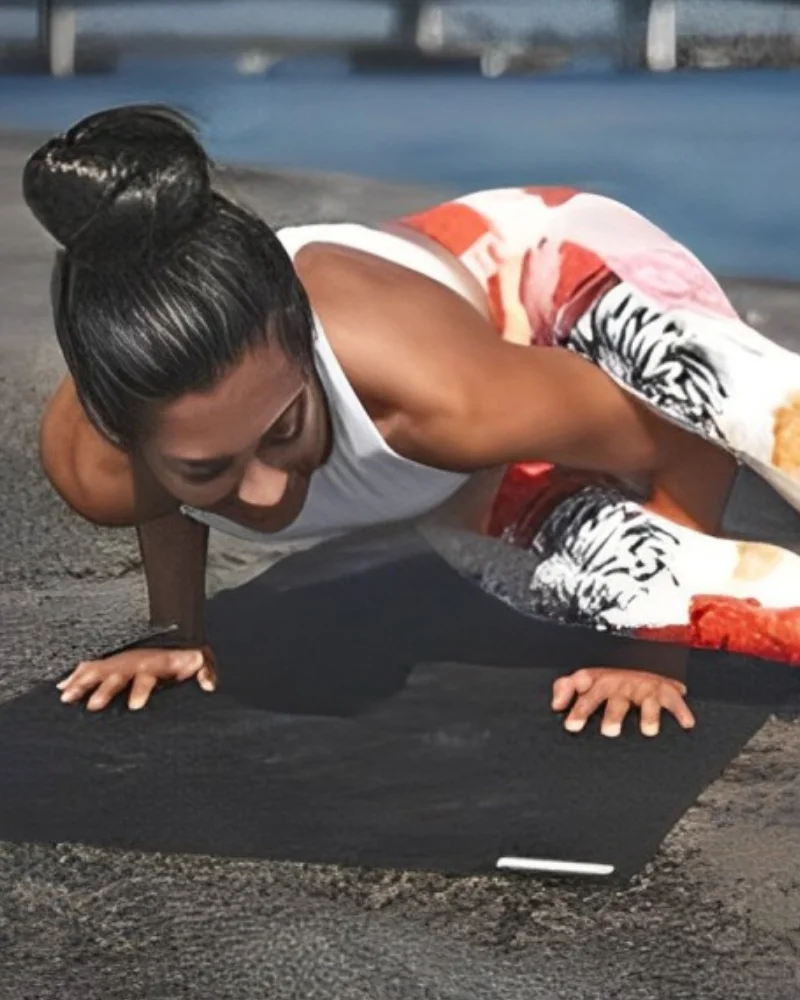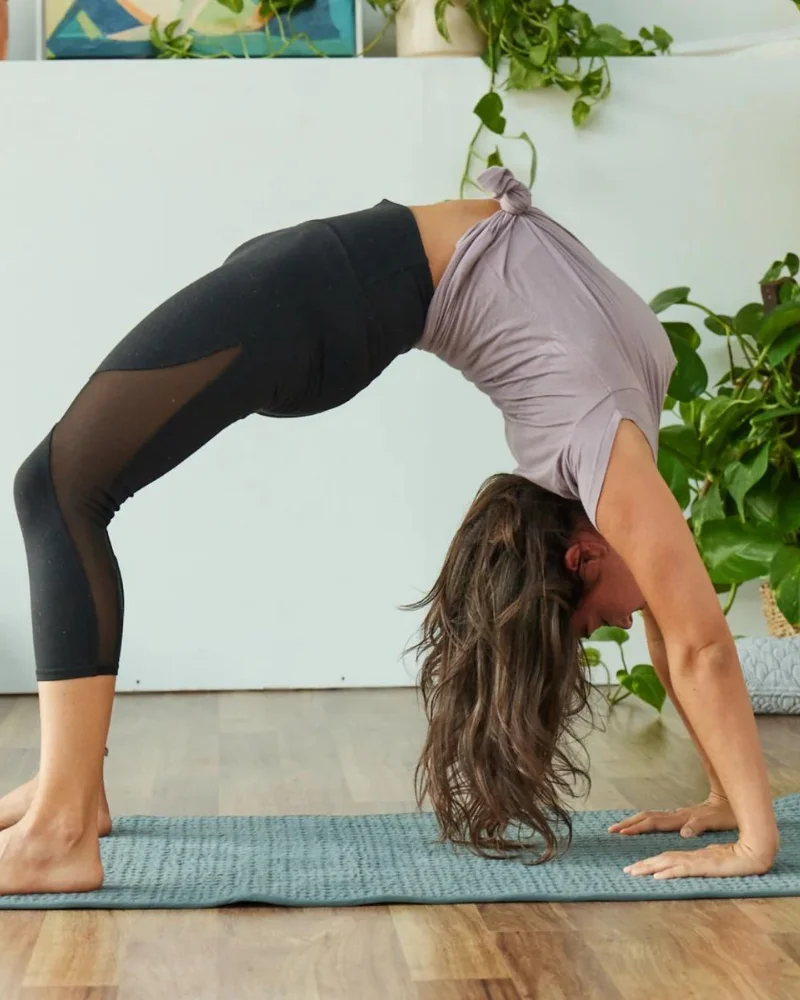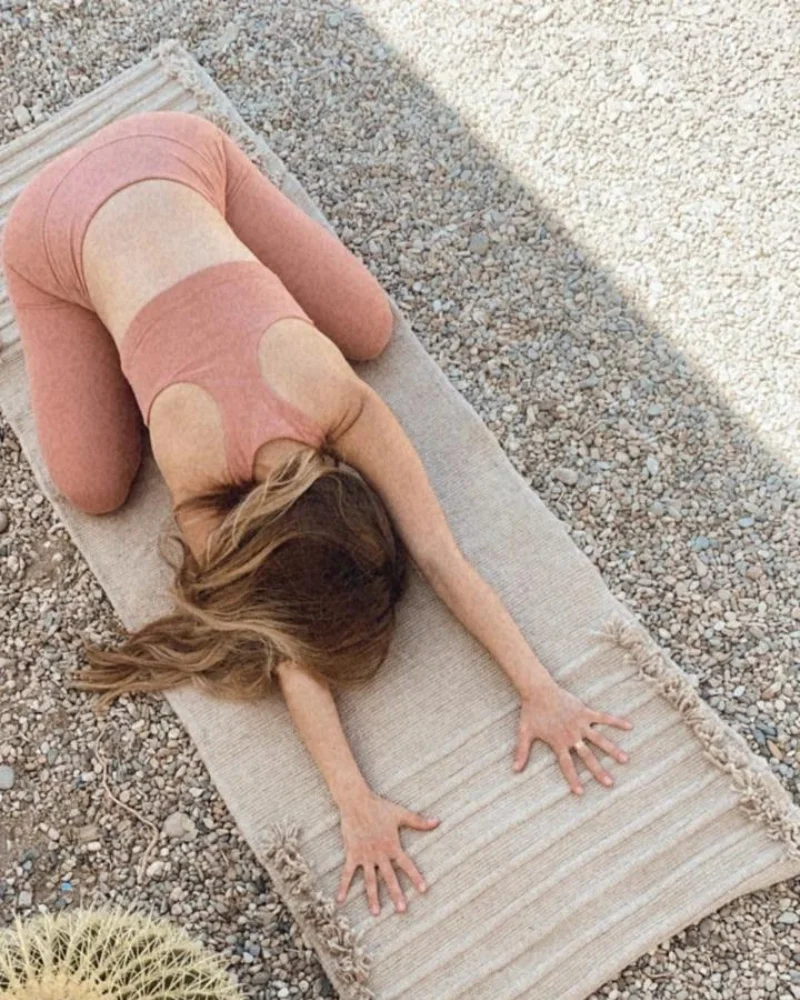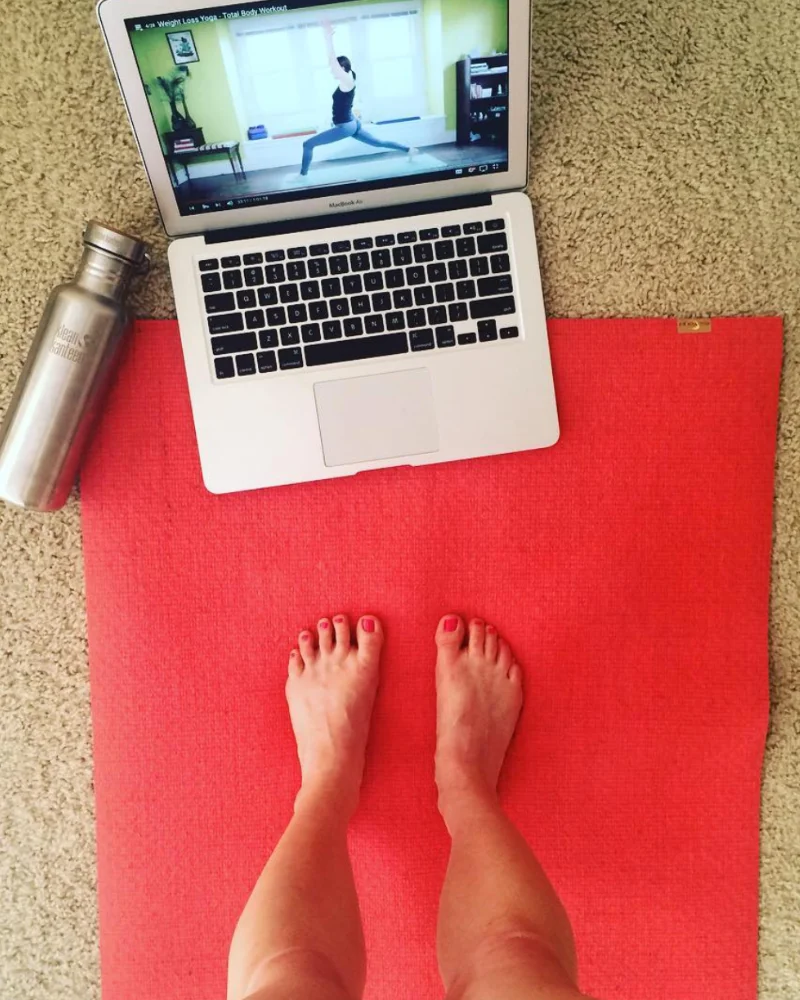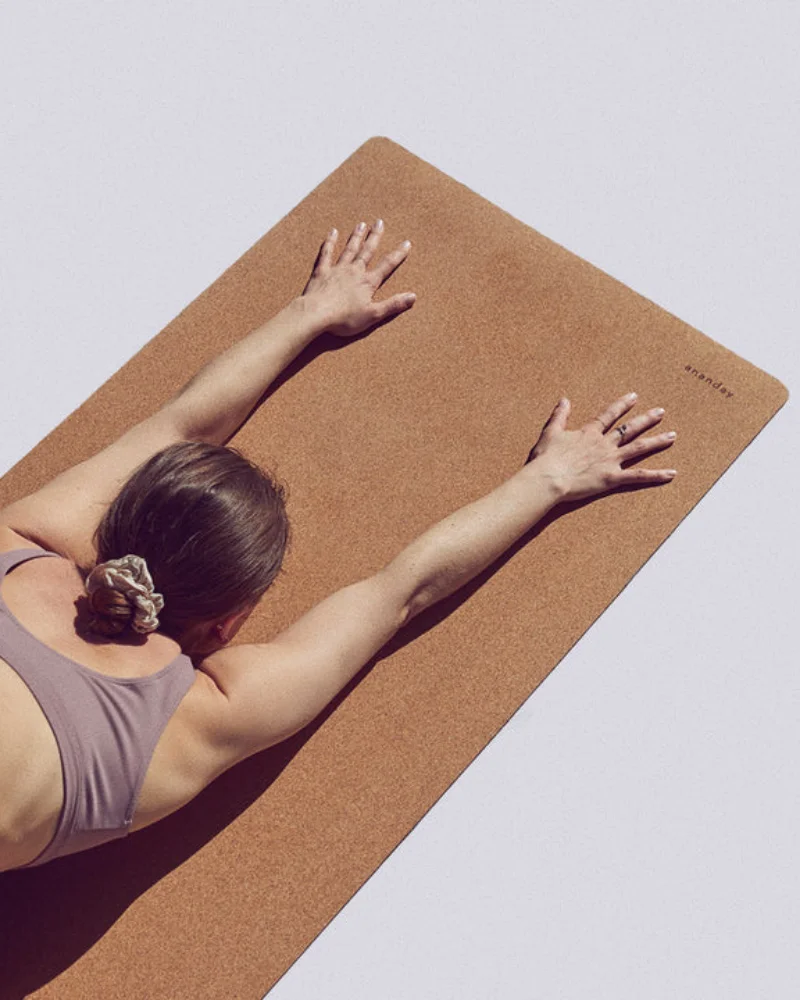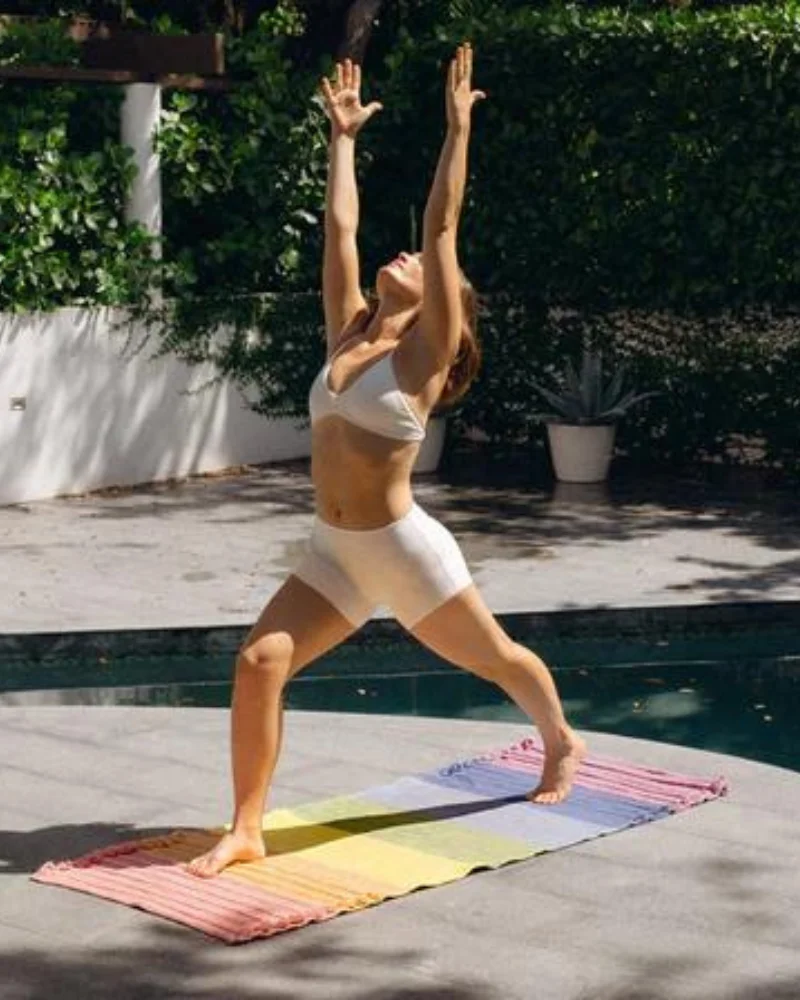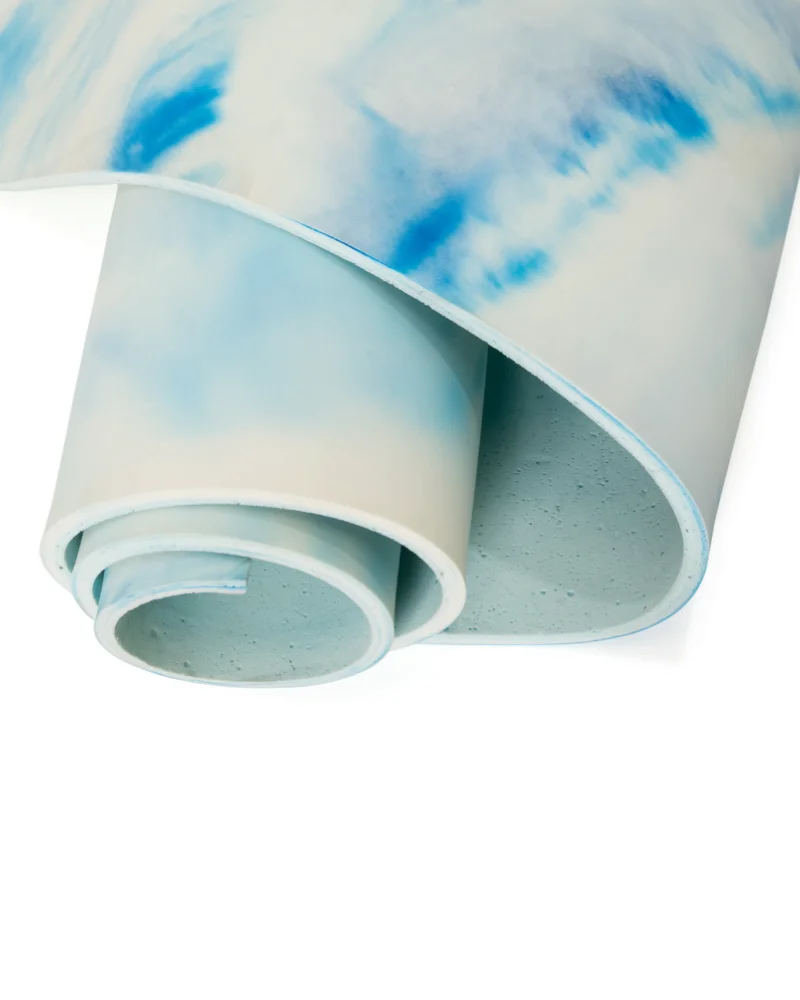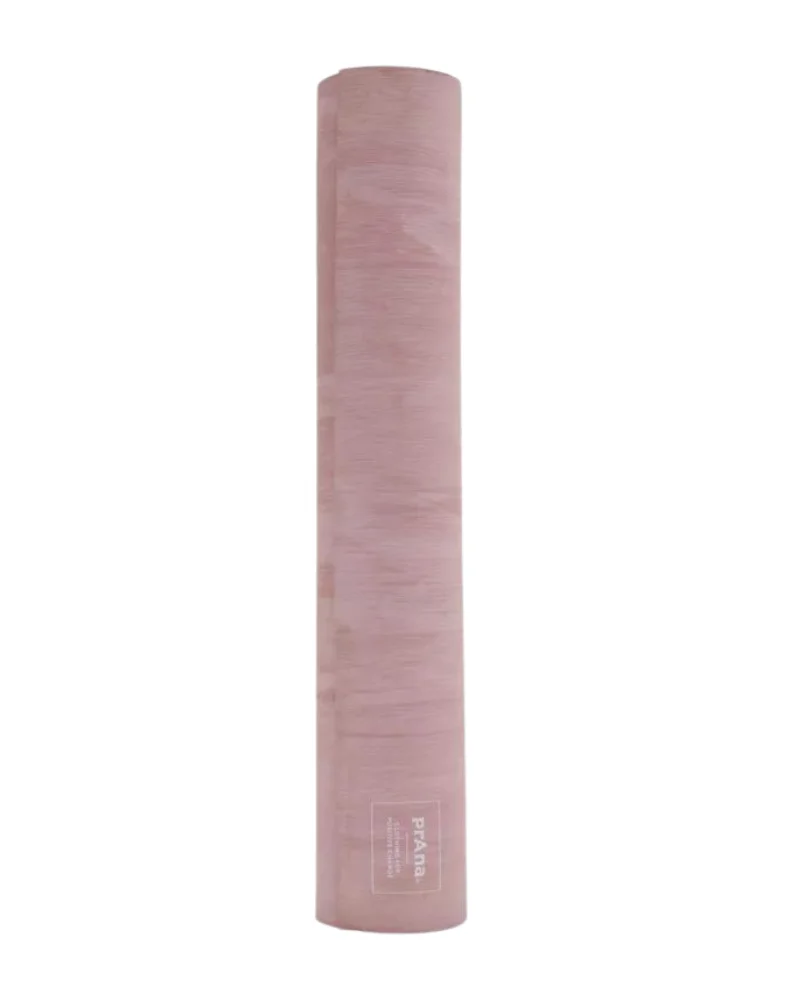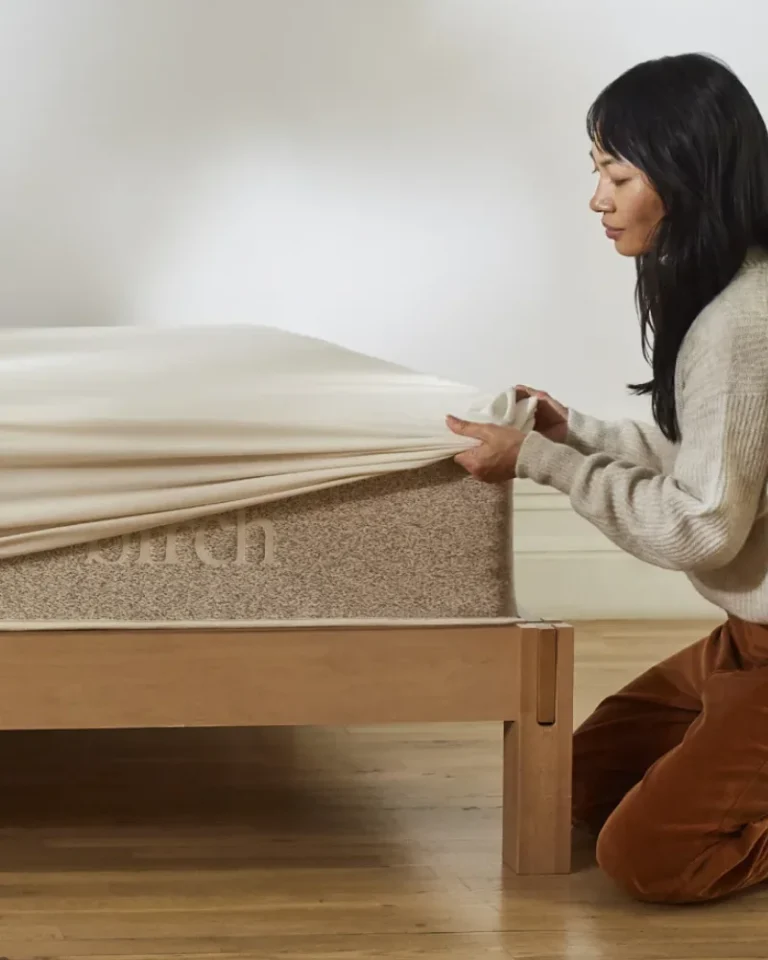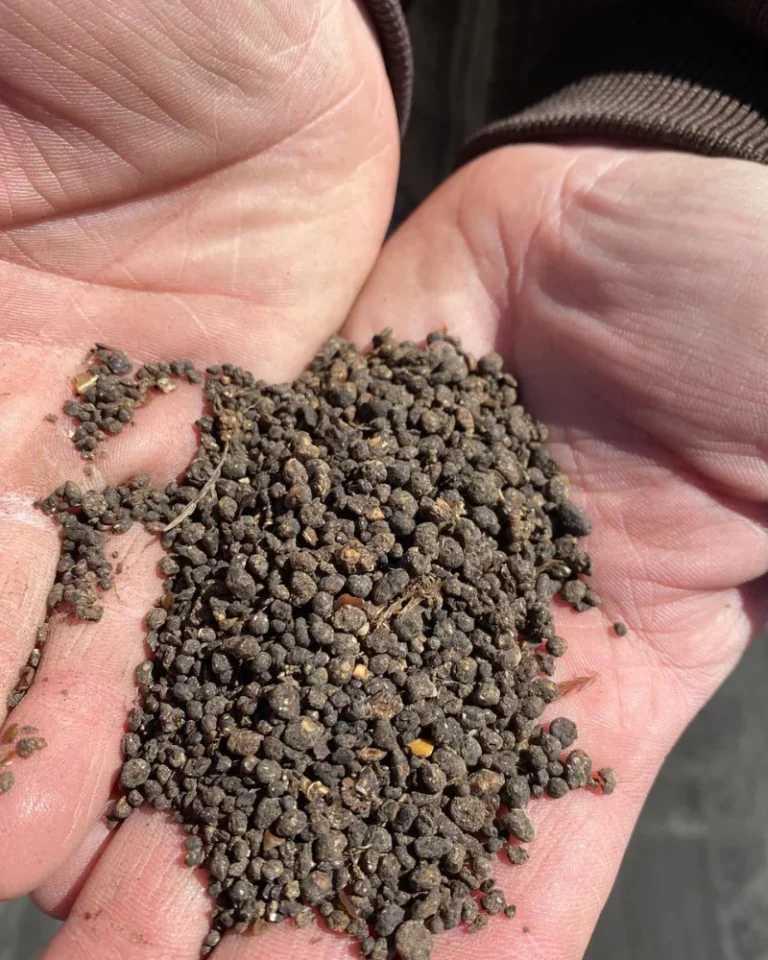This post may contain affiliate links. By browsing this website, you agree to our disclaimer, privacy policy, and terms of use.
Are you searching for a great non-toxic yoga mat? Maybe you’re tired of your current mat disintegrating under your fingers or you can’t stand that unpleasant chemical smell any longer.
Whatever the reason, seeking out a yoga mat made with natural, non-toxic materials is a great step for improving your practice and your health.
In this ultimate guide to navigating the ins and outs of non-toxic yoga mats, we’ll help you understand confusing marketing terms like “eco-friendly,” “sustainable” and “natural” and help you find options that are truly non-toxic and won’t jeopardize your health.
How often do you think about the mat beneath your feet during your sun salutations? We have a feeling it’s probably not too often.
You might only notice it when it starts to wear down or develop an unpleasant odor. But it’s time to start paying more attention to that ordinary yoga mat and the potential impact it could be having on your health!
Many conventional yoga mats are made with synthetic materials that can give off dangerous chemicals as you practice. As you flow through your downward dog and sink into savasana, you might be unknowingly exposing yourself to harmful toxins.
As you sweat and breathe deeply during your practice, these chemicals can be absorbed through your skin and lungs, accumulating in your body over time and potentially causing major health issues.
So, what’s a health-conscious yogi to do? Opt for a non-toxic yoga mat!
The good news is that you don’t have to compromise your health for your yoga practice. There are plenty of amazing non-toxic yoga mat options out there.
These mats are crafted from sustainably sourced, all-natural materials like organic cotton, natural rubber, jute, and cork which are not only better for your health, but better for the environment too!
But you might be wondering what exactly makes a conventional yoga mat so harmful. The answer lies in the toxic chemicals and synthetic materials used to manufacture them.
Let’s take a closer look at some of the most common harmful chemicals found in toxic yoga mats.
Now that we understand the key differences between non-toxic and conventional yoga mats, let’s explore some of the best eco-friendly options available in 2024.
These brands are creating high-performance yoga mats that use the best natural materials for your health.
The Best Non-Toxic Yoga Mat Brands For 2024
Embrace the sweat with Scoria’s Standard Essential Cork Yoga Mat!
Now with a roomy 26″ width, this mat delivers the best traction when the temperature rises, eliminating the need for a towel.
You can also activate the natural grip surface by spraying with water until your body warms up.
The natural cork surface is ultra-grippy, anti-microbial, and odor-resistant, making it perfect for hot yoga, gentle flows, meditation, and stretching.
The extra secure backing is made from sustainably harvested natural tree rubber for extra slip protection. Gotta love that!
With their GOTS-certified cork and rubber, along with safe inks and glue, Scoria sets a new standard for non-toxic yoga mats.
Price
$87.00
materials
100% natural GOTS-certified cork and rubber
Note: Some mats do contain natural rubber latex which is a possible allergen for some.
location/shipping
United States, ships within the US.
Looking for an extra grippy mat that will make you feel confident and secure in your practice?
The Jade Harmony Yoga Mat was named Best Mat for Grip by Yoga Journal for 2024.
This yogi-favorite is perfect for inversions and hot yoga classes.
It won’t get slippery, and it’s extra comfy so you can hold your poses with ease.
Crafted from natural rubber tapped from rubber trees, Jade mats are eco-friendly and non-toxic, containing no PVC, EVA, or synthetic rubber.
Jade Yoga also plants a tree for every mat sold. So far they have planted over TWO MILLION trees!
Price
$91.95
materials
100% natural rubber
location/shipping
United States, ships within the US.
The eKO Yoga Mat from Manduka is mindfully made from non-Amazon rubber trees.
At 5mm thick, this mat provides all the cushiony comfort you want to protect your joints and bones.
The closed-cell surface locks out moisture and bacteria while Manduka’s proprietary Catch-Grip surface keeps hands and feet from slipping.
The eKO Mat is 99% latex-free and responsibly constructed in an earth-friendly, energy-efficient facility.
Even the packaging is made from recycled materials.
Price
$100.00
materials
Bio-degradable, natural, non-Amazon tree rubber, 99% latex-free
location/shipping
United States, ships to the US and Canada.
Discover the perfect blend of tranquility and energy with Yoloha’s Unity Yoga Mat, inspired by the spirit of aloha and zen.
Responsibly handcrafted with materials made entirely in the USA, this exceptionally strong mat combines natural cork and recycled rubber to provide excellent grip no matter what the conditions are.
If you’re tired of yoga mats that roll up or won’t stay flat, you’ll love the Unity Yoga Mat.
It always lays flat and stays in place, so you won’t have to worry about constantly readjusting during your practice.
Yoloha is committed to sustainability, with Climate Neutral, GOT-Certified, and MADE SAFE certifications.
Easy to care for and keep clean, it contains no PVCs, latex, or plasticizers, making it 100% vegan.
Price
$159.00
materials
A blend of sustainably harvested cork and natural rubber
location/shipping
United States, ships to the US, Canada, Spain, and Nicaragua.
Take your practice to the next level with this GOTS-certified organic yoga mat from Brentwood Home.
Brentwood Home’s Organic Yoga Mat is one of the few GOTS-certified organic mats made entirely from organic cotton and latex.
This soft and comfortable mat is made with a 5mm-thick cotton top layer that wicks away moisture.
The natural Dunlop latex base keeps you from slipping, even when wet.
It also comes in 6 beautiful colors to match your vibe!
Enjoy a 30-day trial, a 1-year limited warranty, and the peace of mind that comes with a completely non-toxic yoga mat.
Price
$143.00
materials
Made entirely from organic cotton and latex.
location/shipping
United States, ships within the US.
Did you know that practicing on a traditional cotton yoga mat can help improve your strength and balance?
This organic cotton yoga mat from Mache is handwoven using cotton certified by GOTS and colored with dyes made from plants.
Their special dyeing process even keeps the natural healing properties of the plants intact.
The Ayurvedic medicinal plant dyes, feature 20 skin-soothing herbs like turmeric, neem, and holy basil, to promote holistic wellness..
This 6-ply cotton mat is sweat and slip-resistant, extra-supportive, and ultra-light at just 3 pounds.
Naturally antibacterial and antimicrobial, this mat is also easy to machine wash.
Price
$188.00
materials
100% GOTS Certified Organic Cotton
location/shipping
United States, ships within the US, Turkiye, and Switzerland.
Ready to embrace the power of simplicity with the Original Eco Yoga Mat from Barefoot Yoga Co.
It has no synthetical chemical additives and is made exclusively of all-natural rubber and jute fiber so it’s entirely biodegradable.
The unique blend of rubber and jute in this mat creates a surface that feels pleasantly natural, almost as if you’re practicing yoga directly on the ground.
Please note that the mat contains latex, which may be an allergen for some individuals.
Price
$90.00
materials
Composed exclusively of all-natural rubber and jute fiber
location/shipping
United States, ships to select international countries.
Gaiam is all about embodying the beautiful interconnectivity of all things.
With a mission to make yoga, fitness, and wellness accessible to all, Gaiam is committed to using only sustainable materials in all of their products.
Their Performance Jute Yoga Mat is made partly from natural jute plant fibers and PER (Polymer Environmental Resin).
This combination provides a non-slip, non-toxic surface free of latex and silicone.
Important Note: While PER is considered less toxic than PVC, it’s still a synthetic material and more research is needed on its long-term health effects through skin contact and inhalation.
While not entirely natural, this is a good affordable option that represents a step towards more eco-friendly yoga gear.
Price
$39.98
materials
All-natural jute and Polymer Environmental Resin.
location/shipping
United States, ships within the US.
Praised by yogis for its perfect grip, the Cork Yoga Mat from Ananday is a favorite among eco-conscious yogis, and for good reason!
It’s made from non-toxic, renewable cork and natural tree rubber. It’s 100% biodegradable, including the packaging!
Anaday’s yoga mats are made without PVC, PER, TPE, and other synthetic blends commonly found in many yoga mats.
We love that the reversible design offers the option of a rubber side for added grip when doing crow-pose or headstands.
With every piece sold, ananday plants trees, maintaining a carbon-neutral and planet-kind commitment.
Price
$88.00
materials
Renewable cork and natural tree rubber.
location/shipping
United States, ships within the US.
Feel one with the earth with Oko Living’s hand-loomed, organic cotton yoga rugs.
Oko Living’s yoga rugs blend ancient wisdom with modern sustainability for a truly transformative yoga experience.
Dyed with 10-20 plants and flowers, including neem, turmeric, and holy basil, these mats preserve the bioactive medicinal qualities of the herbs, allowing your skin to absorb their healing properties.
Oko Living is committed to doing the right thing. They use only natural, toxin-free, and certified organic cotton.
The mats are handwoven in India, where the workers are treated fairly and paid well.
So, when you use one of their mats, you’re not only getting a product that’s good for your body (it even has antibacterial and skin-soothing properties) but you’re also supporting the people who made it. Talk about a win-win for everyone!
Price
$188.00
materials
100% GOTS Certified Organic Cotton.
location/shipping
United States, ships to the United States, UK, Singapore, Norway, and Japan.
Embrace eco-friendly yoga with Palmpring’s certified organic latex yoga mat.
Made from certified organic natural latex, which comes from rubber trees that are carefully harvested to protect the environment.
The mat is naturally resistant to germs, and it will break down over time without harming the planet.
We love the fun tie-dye design! This mat is also extra thick (10mm) for a cushiony feel under your feet.
The natural texture of latex helps prevent slipping, so you’ll feel stable and comfortable in any yoga pose.
Price
$149.00
materials
GOLS-certified organic latex.
location/shipping
United States, ships to select international countries.
Yoga Studio’s Organic Cotton Yoga Mats are handwoven by hand loom in India using the finest quality rich organic cotton.
These mats are eco-friendly, biodegradable, and perfect for all sorts of yoga styles, like Hatha, Vinyasa, and Ashtanga.
Use this mat on its own or atop another yoga mat for added comfort and slip resistance.
They’re especially great for Hot Yoga or Power Yoga because the organic cotton material gives you a better grip when you sweat. So, the more you sweat, the less you slip!
Its lightweight and foldable design makes it perfect for taking your yoga practice on the go.
Price
$41.00
materials
Organic natural cotton
location/shipping
United Kingdom, ships to the UK, US, Italy, Ireland, and France.
Prana’s Verde Yoga Mat features a blend of Forest Stewardship Council (FSC) certified materials and recycled rubber.
Prana’s commitment to sustainability starts at the source, from the fields where their organic cotton and hemp are grown to the factories where their clothing is assembled.
They carefully manage chemicals and packaging to minimize environmental impact, ensuring that every style is crafted with the planet and its people in mind.
This eco-friendly mat offers the anti-slip grip, excellent elasticity, and comfortable cushioning you expect, with a 100% organic cotton scrim middle layer for shape retention and a 35% recycled rubber bottom.
Price
$99.00
materials
Top Layer: 100% FSC-Certified Rubber, Middle Layer: 100% Organic Cotton, Bottom Layer: 65% FSC-Certified Rubber, 35% Recycled Rubber
location/shipping
United States, ships within the US.
This has been your complete guide to the best non-toxic yoga mat brands for a healthier practice!
If you want to elevate your yoga practice and create a healthier, more sustainable lifestyle, switching to a non-toxic yoga mat is one of the best choices you can make!
With so many high-quality options made with natural materials, there’s never been a better time to invest in your well-being.
Whether you prefer the grip of natural rubber, the comfort of organic cotton, or the grounding feel of cork, there’s a non-toxic yoga mat perfect for however you like to practice.
So get ready to roll out your new healthy mat, take a deep breath, and embrace the zen of your totally toxic-free yoga practice!

